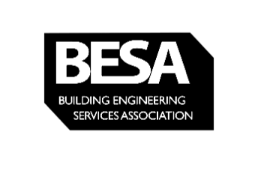Maintaining proper washroom hygiene in commercial spaces is crucial for ensuring the health and satisfaction of employees, customers, and visitors.
Despite its importance, many businesses unintentionally make hygiene mistakes that can lead to health risks, customer complaints, and even reputational damage.
In this post we’ll list the most common oversights we see when working with our clients. By addressing these issues, you can create a clean, welcoming environment that leaves a positive impression on everyone who uses your facilities.
Inconsistent Cleaning Schedules
The Problem:
One of the most common mistakes businesses make is not adhering to a consistent cleaning schedule. Washrooms are high-traffic areas prone to the accumulation of germs, dirt, and odours. Skipping or delaying cleanings can result in unsanitary conditions that quickly spiral out of control.
Why It Matters:
● Dirty washrooms harbour bacteria and viruses, increasing the risk of illness.
● Customers and employees may perceive poor hygiene as a reflection of the business's overall standards.
The Solution:
● Create a Detailed Cleaning Plan: Design a schedule tailored to the level of traffic your washroom experiences. High-traffic areas may need cleaning multiple times a day.
● Use a Checklist: Ensure all tasks are covered, from refilling supplies to disinfecting high-touch areas like door handles and faucets.
● Monitor Performance: Assign responsibilities to specific staff members and conduct regular inspections to maintain standards.
Neglecting Touchpoints
The Problem:
High-touch surfaces such as door handles, faucet levers, flush buttons, and soap dispensers are often overlooked during cleaning routines. These surfaces are hotspots for germ transmission.
Why It Matters:
● Viruses like norovirus and the flu can survive on surfaces for hours or even days.
● Neglected touchpoints can undo the effects of other cleaning efforts.
The Solution:
● Focus on High-Touch Areas: Include these surfaces in every cleaning cycle. Use disinfectant wipes or sprays proven to kill 99.9% of germs.
● Opt for Hands-Free Alternatives: Install automatic soap dispensers, sensor-activated faucets, and touchless flush systems to minimise physical contact.
● Educate Staff: Train your cleaning team to prioritise these surfaces during their rounds.
Poor Supply Management
The Problem:
Running out of essential supplies like soap, paper towels, or toilet paper is a frequent issue in many business washrooms. This not only frustrates users but also compromises hygiene.
Why It Matters:
● Lack of soap discourages handwashing, leading to poor hygiene.
● Empty dispensers leave a negative impression on customers and employees.
The Solution:
● Conduct Regular Inventory Checks: Assign someone to monitor supply levels and restock when necessary.
● Use High-Capacity Dispensers: Reduce the frequency of refills by opting for larger dispensers for soap, paper towels, and toilet rolls.
● Automate Alerts: Install smart dispensers with sensors that notify staff when supplies are low.
Ignoring Odour Control
The Problem:
Unpleasant odours are one of the biggest complaints about public washrooms. Often, businesses focus solely on visual cleanliness and neglect proper odour control.
Why It Matters:
● Foul odours can deter customers from returning and create discomfort for employees.
● Persistent smells might indicate underlying issues like poor ventilation or plumbing problems.
The Solution:
● Improve Ventilation: Ensure your washroom has adequate airflow to prevent odour buildup. Install exhaust fans if necessary.
● Use Odour-Neutralising Products: Place air fresheners or odour-neutralising sprays in discreet locations. Consider eco-friendly options to align with sustainability goals.
● Clean Drains Regularly: Blocked or dirty drains are common sources of unpleasant smells. Use enzymatic cleaners to break down organic matter.
Failing to Address Accessibility and Inclusivity
The Problem:
Neglecting to provide inclusive and accessible washroom facilities is not only a hygiene issue but also an ethical and legal concern. Disabled individuals, parents with young children, and gender-diverse individuals may face challenges using poorly designed washrooms.
Why It Matters:
● Inaccessible facilities can alienate customers and employees, leading to dissatisfaction and potential legal repercussions.
● A lack of amenities such as baby-changing stations or sanitary product dispensers can negatively impact hygiene and convenience.
The Solution:
● Provide Gender-Neutral Options: Offer inclusive washrooms that accommodate all users comfortably.
● Install Essential Amenities: Equip your washrooms with baby-changing tables, sanitary product dispensers, and waste bins for hygiene products.
Proactive Measures for Superior Washroom Hygiene
Employee Training
Train cleaning staff and employees on hygiene best practices. This includes proper cleaning techniques, understanding the importance of hygiene, and recognising signs of issues like leaks or mould.
Feedback Systems
Implement feedback mechanisms, such as QR codes linked to surveys, to allow users to report issues or suggest improvements. This ensures problems are addressed promptly.
Professional Deep Cleaning
Schedule regular deep cleanings with professional services such as phs to tackle areas that routine cleaning might miss, such as tile grout or air ducts.
Regular Maintenance Checks
Conduct periodic inspections to ensure that plumbing, fixtures, and dispensers are in working order. Leaks or broken equipment can lead to hygiene issues and additional costs.
Washroom hygiene is a critical aspect of running a successful business, yet it’s easy to overlook key areas. By avoiding these five common mistakes—maintaining inconsistent cleaning schedules, neglecting touchpoints, mismanaging supplies, ignoring odour control, and failing to ensure accessibility—you can significantly improve the hygiene and overall experience of your facilities.
Investing in better cleaning practices, advanced touchless technology, and inclusive designs not only promotes health and safety but also enhances your business’s reputation. Take the time to assess your current washroom hygiene practices and implement these changes today to create a more sanitary and welcoming environment.
If you’d prefer to have experts handle this for you so you can focus on growing your business, consider getting in touch now.


































